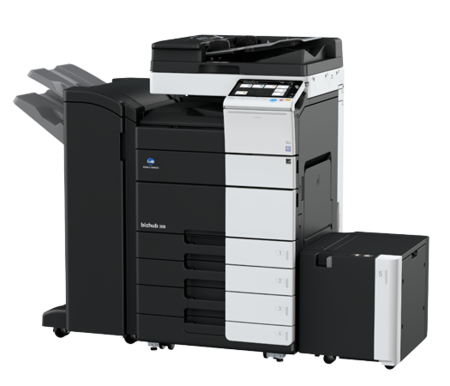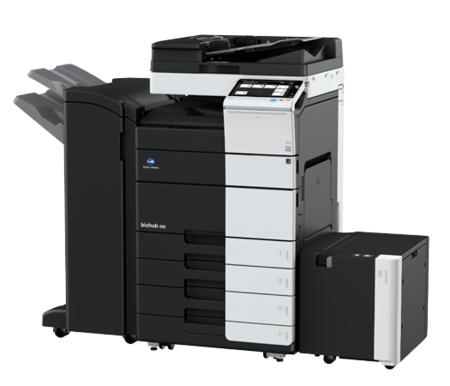In today's world where business is dominated by cloud computing, file sharing, smartphones, and tablets, it may seem outdated to have a need to print out information on paper. But as you know, many areas of industry still rely heavily on printing to communicate effectively with clients and coworkers.
When it comes to printing, there are a variety of options. One decision you'll have to make is whether local printers or network printers will better serve the needs of your company. What is the difference between local and network printers, and what do you need to know when making your decision? Let's take a look at your options.
What is a local printer?
A local printer is directly connected to a specific computer via USB cable. It is a printer that is only accessible from that computer and can only service one computer at a time. Local printers ensure employees with large printing needs have reliable access to a printer. They also improve the efficiency of project workflow. When a local printer is used to print out pieces for a project, it is easy to immediately see if the printed materials are accurate. If there is a problem, it can be corrected in a timely manner.
While convenient, local printers do have downsides, especially when it comes to costs. Buying and maintaining multiple printers is costly in and of itself, but there is also the cost of ink and paper for each printer. If a local printer isn't one of the top brand names and it breaks down, it can be difficult to find someone qualified to repair it. Plus, employee productivity will be impacted when a local printer goes down because they cannot simply reroute to another printer.
What is a network printer?
A network printer is part of a group of computers that can all access the same printers at the same time. A network printer does not have to have a physical connection to the network. Instead, it can also be connected wirelessly and assigned to a workgroup. Network printers efficiently meet the needs of multiple employees with a single printer. Network printers offer flexibility and efficiency to all employees in the office. This means users throughout the office can access network printers regardless of the platform in use on their device. Network printing solutions offer employees a variety of print options when various types of printers are connected to the network.
As a downside, with multiple users capable of accessing the same printers, projects can be delayed when the printer is already in use and if the network goes down then printers become inaccessible.
While certain businesses and work environments are better served by local printers, we've found that the majority of today's businesses are better served by network printers.
A network printer has many advantages over having each computer directly connected to its own printer. Network printers are relatively simple to set up and very easy to use once configured. The benefits network printers bring makes them the preferred printer setup in today’s office environment. Some of the primary benefits include:
Cost savings.
1. With network printers, you can save money in numerous ways. 2. You don't need a printer for every employee.
3. You will have fewer print devices to supply, saving you from stocking a broad variety of supplies.
4. Minimizing the quantity and variety of machine models in your office can save money on support and maintenance costs.
5. Training all employees on the same equipment will streamline internal printing processes.
Individually, these cost-saving opportunities offer additional benefits, but combined, they add up to substantial savings of time and money for your business.
Less Maintenance.
Because there are fewer devices and more like models, your overall print technology will require less maintenance. Your maintenance needs will be more centralized and easier to manage.
More Uniformity.
Employees will be equally knowledgeable on the use of your central printers, leading to greater workplace efficiency. Individual printers can vary by brand, age, capabilities, and supply requirements; these variations require specific training, understanding, monitoring, and maintenance which can take up your employees’ time.
Access to Enhanced Capabilities.
Network printers are generally higher quality than personal printers. A central network printer is almost certain to have better capabilities than personal printers in terms of printing capacity, speed, paper handling and advanced finishing capabilities. These devices often have an extended product lifecycle.
Remote Use
A network printer can accommodate employees working from remote locations who still need to print. By connecting to the network using the Internet, employees can send documents to print from anywhere. Network printers are a great tool for people who need to print from remote locations.
Multiple Printer Usage
Some offices require more than one printer. With a network print environment, you can connect as many printers as necessary and give your employees the ability to send their project to the appropriate printer based on their printing requirements.
Tracking
A lack of usage tracking almost certainly converts to unmanaged and uncontrolled print costs. It's much simpler to track the printer and supply usage with network printers, especially when used with a Managed Print Services program.
Determining whether your business needs local or network printers depends upon your core business operations. There is no single right answer for every business or every situation. Consulting with one of our print specialists might help you identify the needs of your company and determine if local or network printers are the better solution within your office. Contact Tri-Copy today to set up an appointment with one of our specialists.




